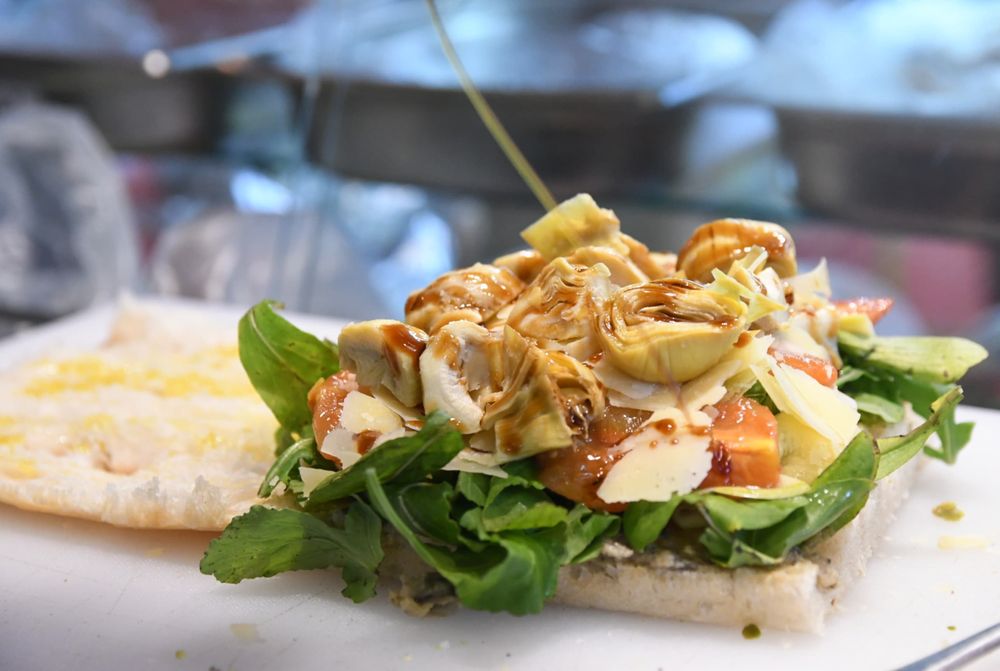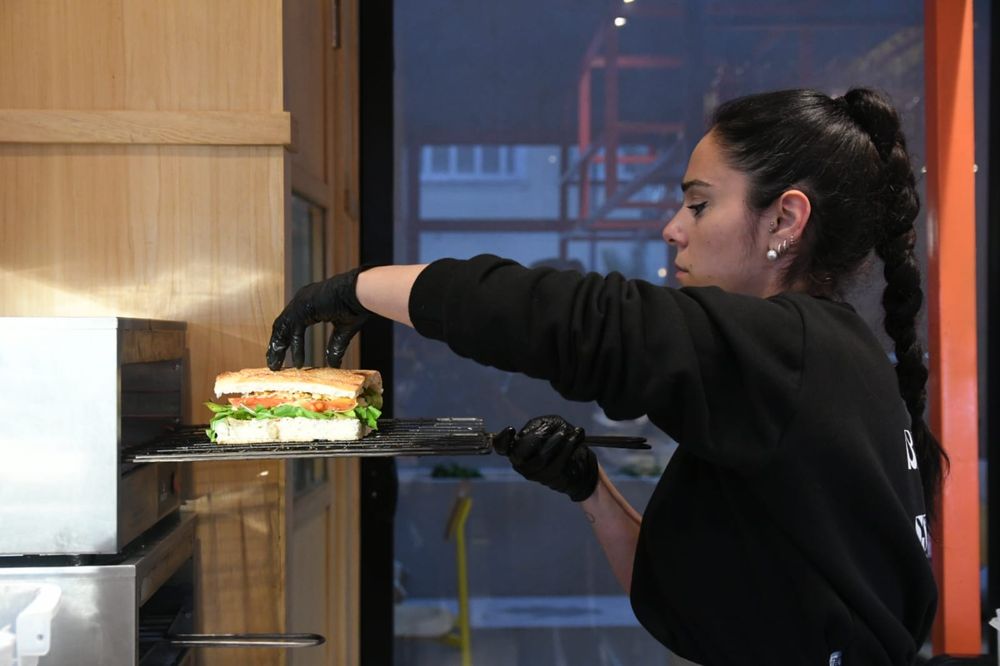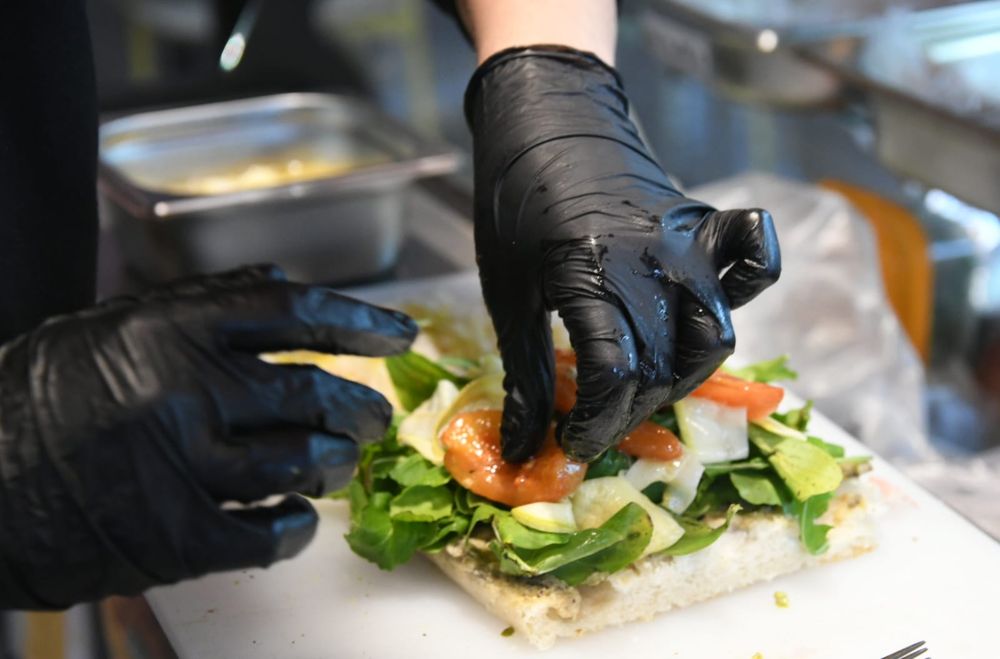Gourmet sandwich shops: a new trend and an alternative to the crisis

The analysis classified a total of 4,856 establishments according to their category, with the main distribution being restaurants, which represented 38.7% of the total, bars with a 17.4% share, and coffee shops, which came in third with 15.3% of establishments. Sandwich shops then accounted for 10.6%, pizzerias 7.2%, and fast food 2.9%. The remaining percentage was divided between ice cream shops, grills, hot dogs, and breweries.
“The sandwich has always been present in the Argentine imagination,” said Fernández Romani. The Milanese sandwich, the asado sandwich, the choripán, the aforementioned lomo, and even the hamburger, which is now practically a national property. Amid a sharp decline in the restaurant sector, most sandwiches seek to stand out among other offerings and attract the largest possible audience.
" Gourmet sandwich shops are coming to exploit this niche, offering, among other things, signature breads, high-quality cold cuts, and elevating the sandwich experience ," explained Fernández Romani. From his perspective, these options have an opportunity to establish themselves among the diverse offerings of Mendoza's gastronomy . Among the challenges of this innovative trend are sustaining itself over time, transcending trends, and establishing a new style.
In this regard, Javier Bustamente, owner of the Bravíssimo focaccia shop (recently opened on the quinta) with the Jalil brothers, explained that the focaccia sandwich has been well-received by Mendoza residents. Focaccia is a very moist, tall bread with olive oil that they make themselves. "We make a slightly different one that has a crispier crust and less crumb," Bustamente explained, adding that it is a bread that ferments for 24 to 48 hours.
With the aim of offering an Italian taste, the cold cuts offered here include mortadella with pistachios and prosciutto (a type of raw ham). Among the cheeses are burrata, gorzonzola, and fontina. "The sandwich generally has the advantage of allowing for a longer eating time," Bustamente commented. This means that some people order it for breakfast or a snack, or it's easier to digest during the midday workday than, for example, a loin, which is mostly eaten at night.
WhatsApp Image 2025-07-02 at 18.49.44.jpeg

Raúl Roitman, president of Aehega and owner of Zitto , confirmed the current trend of new, cool sandwich shops . He observed that the audience for these types of spaces is diverse, but largely targets a younger segment. This includes Guchini , for example, where kids look for games and often buy their sandwiches in Plaza Italia. In a previous interview with this outlet, one of the brand's creators, Federico Robello , explained that he works hard through social media to encourage customers to visit them.
“ Gourmet sandwich shops , like all other dining establishments, should offer options, offer a good balance between price and quality, be innovative, and strive to go the extra mile,” reflected the owner of Auténtico, located on Sarmiento Street.
An alternative to competeRaúl Roitman explained that the current situation isn't the best for gastronomy , and the rest of the experts consulted agreed. In this context, he added that most restaurants have begun to update and seek to become more competitive. For this reason, the sandwich is an interesting alternative that can replace lunch in some cases, but not in others.
Online, Javier Bustamante—also head chef of Modesto and Morfi cafés—commented that gastronomy is currently in crisis because there's little money on the streets and no tourism. "Mendoza used to be a huge gastronomic hub, and now we're all fighting for a few customers," Bustamante reflected. Among other options, there's a growing focus on smaller venues, delivery options, and fewer employees within the limits of each format without significantly impacting service, which is key to good gastronomy .
With tourism in a slump, some establishments—including wineries—that used to cater exclusively to Brazilian or foreign tourists have adjusted their prices to attract Mendoza residents. While this encourages competition, it also makes things more difficult for smaller establishments or those with less solid footing. In this context, most seek to be more efficient with diverse offerings and the most competitive prices possible.
“The sandwich allows us to open from 9 a.m. to midnight, and we're seeing that increasingly in restaurants as well,” commented the owner of Bravissimo. Extending business hours is a way to maximize rent and utility bills amid the widespread downturn. Luan Fernández Romani commented that the sandwich has been a way for them to create a connection between haute cuisine and the popular.
WhatsApp Image 2025-07-02 at 18.49.44 (2).jpeg

Although Auténtico offers contemporary cuisine and focuses on seasonal produce, it also strives to be a typical Mendoza restaurant. This space offers specialty sandwiches on its menu. Likewise, they also hold events where they present glamorous recipes. Among them is the pastrami sandwich, a typical restaurant recipe that takes a week to prepare. The wild boar burger is another product offered here. "As a member of the Argentine grillers and barbecue team, we also have a signature choripán," Fernández explained.
In line with the trend, they not only prepare and age the chorizo, but then place it in a fermented brioche bun, with pickles and other special touches. "It's a tribute and at the same time haute cuisine," the chef commented. In this sense, the sandwich is, for him, a way to introduce more people to a type of cuisine they might not otherwise dare to try.
Daily battleThe gourmet sandwich is thus an opportunity to challenge the daily grind of the kitchen while elevating the offering a bit. It's important to keep in mind that gastronomy can compete on price, but it primarily competes on experiences. In other words, not only the quality of service and attentiveness plays a key role, but also other types of added value beyond the food's richness. Here, artistic offerings have also begun to be added, aiming to add "something extra to the mix."
Aehga explained that they are working together with the public sector to develop proposals. For example, they have implemented itinerant pedestrian areas on the tourist-friendly Sarmiento Street and implemented outdoor activities that encourage consumption or attract the public in different ways. "It's important to establish this synergy to address the current situation," said Fernández Romani. He added that the sector must jointly seek alternatives instead of waiting for tourists to return or for consumption to improve.
Due to the loss of purchasing power and the devaluation of neighboring countries, which makes them cheaper than Argentina, with the resulting loss of domestic and international tourism, the gastronomy sector is also declining. The decrease in the number of Mendoza residents eating out is not only due to the difficulty of making ends meet, but also because when inflation was high, many preferred to spend their money before it lost value.
Now, with the aforementioned restrictions, those who can afford it prefer to save a few pesos rather than spend them. Those who have more, on the other hand, choose to travel abroad due to the affordable prices. This is relevant because the gastronomic observatory analyzed the origin of diners at Mendoza's gastronomic establishments to understand the composition of demand in the sector. According to the data collected, 43.35% of customers are local, indicating a strong presence of residents who frequent these spaces. Therefore, while tourism is important, local consumption is also strong.
20.88% of diners come from the rest of Mendoza, demonstrating significant internal mobility within the province. Nationally, 17.83% of visitors are from other Argentine provinces, while foreign diners represent 17.93%, demonstrating the importance of international tourism in Mendoza's gastronomy. In this context, several establishments in Mendoza have closed so far this year, many of them with years of experience.
Roitman stated that stores monitor their receipts daily and that the situation is worrying, especially given the uncertainty ahead. However, both the president of Aehga and the other representatives consulted agreed that the difficulties have spurred competition. If some inefficiencies were previously covered by price increases due to inflation, today solutions must be found elsewhere.
WhatsApp Image 2025-07-02 at 18.49.46.jpeg

For this reason, we're seeing more aggressive promotions, menu changes, and even a search for new customers, including sandwiches , executive menus, and other promotions that serve to attract more employees. Despite all this, a recovery in consumption is expected going forward, although it's unclear when this will happen. In the meantime, the goal is not only to survive but to strengthen the sector through creative ideas and in collaboration with the public-private sector.
X-ray of Mendoza's gastronomyThe analysis by the Emetur and Aehga gastronomic observatory showed, among other things, the range of diners served per month in Mendoza's gastronomic establishments, which allows us to understand the magnitude of activity in the sector. According to the data, 7.59% of establishments serve fewer than 300 diners per month, while 41.83% receive between 300 and 1,000 diners.
Establishments serving between 1,000 and 4,000 diners represent 38.09% of the total, demonstrating a significant segment of establishments with stable demand. Finally, 12.49% of the province's restaurants serve more than 4,000 diners per month, reflecting the existence of businesses with a high capacity.
"This outlook reaffirms the diversity of the sector, where small and medium-sized companies coexist with large operators, each responding to different market dynamics and customer profiles," the aforementioned report stated.
Finally, regarding sandwich shops , the analysis of the specialty of Mendoza's restaurants allows us to identify the predominant trends in the province's culinary offerings. The results indicate that the most common specialty is red meat and fish, accounting for 33.87% of establishments. Other highly represented specialties include coffee and pastries (27.80%), pasta and pizza (25.59%), and sandwiches, hamburgers, and snacks (20.36%). This demonstrates a preference for fast-preparing and fast-eating food options.
losandes




